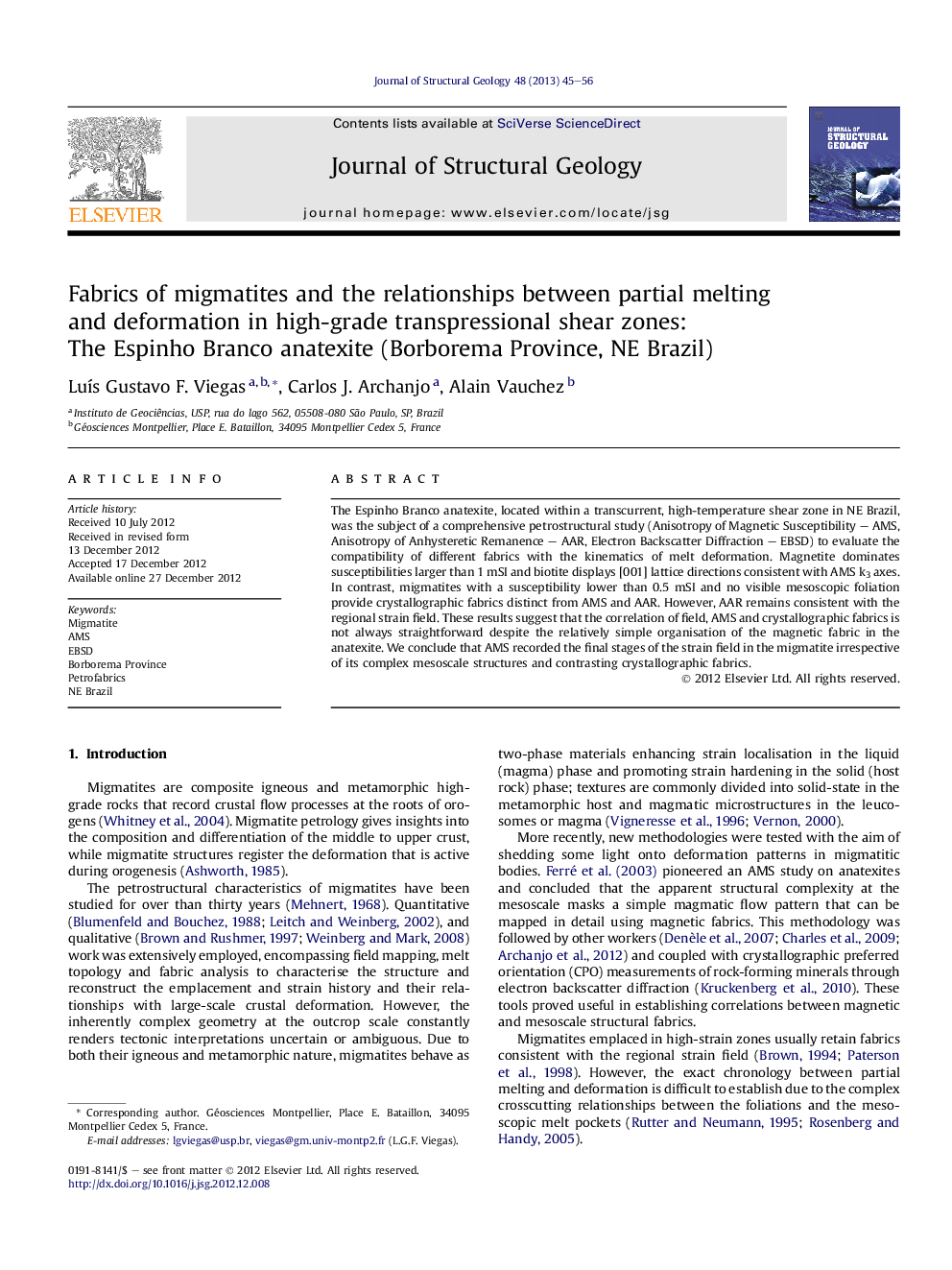| Article ID | Journal | Published Year | Pages | File Type |
|---|---|---|---|---|
| 4733217 | Journal of Structural Geology | 2013 | 12 Pages |
The Espinho Branco anatexite, located within a transcurrent, high-temperature shear zone in NE Brazil, was the subject of a comprehensive petrostructural study (Anisotropy of Magnetic Susceptibility – AMS, Anisotropy of Anhysteretic Remanence – AAR, Electron Backscatter Diffraction – EBSD) to evaluate the compatibility of different fabrics with the kinematics of melt deformation. Magnetite dominates susceptibilities larger than 1 mSI and biotite displays [001] lattice directions consistent with AMS k3 axes. In contrast, migmatites with a susceptibility lower than 0.5 mSI and no visible mesoscopic foliation provide crystallographic fabrics distinct from AMS and AAR. However, AAR remains consistent with the regional strain field. These results suggest that the correlation of field, AMS and crystallographic fabrics is not always straightforward despite the relatively simple organisation of the magnetic fabric in the anatexite. We conclude that AMS recorded the final stages of the strain field in the migmatite irrespective of its complex mesoscale structures and contrasting crystallographic fabrics.
Graphical abstractFigure optionsDownload full-size imageDownload high-quality image (313 K)Download as PowerPoint slideHighlights► Combined fabric studies help constrain melt deformation in shear zones. ► Fabric comparisons reveal that their correlation is not always straightforward. ► Complex patterns are not reproduced in migmatite internal fabrics.
